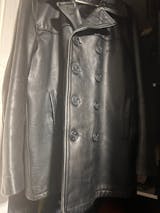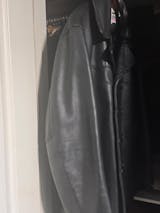6 Top Tips for Caring for Leather Car Interiors in Winter
Protect Your Leather From Cold Weather, Moisture and Daily Wear
Winter is one of the toughest seasons for leather car interiors. Cold temperatures, damp clothing, road salt residue, and lack of ventilation all contribute to dryness, cracking, staining, and premature ageing. Whether you drive a daily family car or a luxury vehicle, winter leather care is essential to keep your interior looking and feeling its best.
Here are six expert tips to help you protect your leather this winter.
1. Prevent Drying and Cracking With Regular Hydration
Cold weather reduces moisture levels in leather, making it stiff, dry, and prone to surface cracking — especially on bolsters and steering wheels.
Winter care tip:
Use a high-quality protection cream like LRC Protection Cream to nourish the fibres and keep the surface supple. Apply before winter begins and top up every 4–6 weeks.
Hydrated leather is flexible leather — and flexible leather doesn’t crack.
2. Protect Leather Against Rain, Snow and Damp Clothing
Wet jackets, damp trousers, and melting snow transfer moisture and dirt directly onto seats. Over time, this leads to dye transfer, water marks and mould growth.
What to do:
- Wipe seats weekly with a soft bamboo cloth.
- Use LRC Leather Guard® to create a breathable protective barrier.
- Avoid sitting on leather with drenched clothing where possible.
A simple weekly wipe can prevent stains that become expensive repairs in spring.
3. Keep Road Salt and Winter Grime Away From Leather
Salt from winter roads climbs into interiors via clothing and footwear. When it reaches leather, it can cause abrasion, surface drying and premature wear.
Expert move:
Clean leather more frequently during winter using LRC Luxury Leather Cleaner.
Focus especially on:
- driver’s seat bolster
- steering wheel
- armrests
- any high-contact surfaces
Winter grime is harsher than summer grime — treat it that way.
4. Maintain Interior Humidity Levels
Leather prefers moderate humidity. Heated seats, hot air blowers and cold air outside create huge fluctuations, causing the fibres to contract and expand unnaturally.
This leads to wrinkling, dryness and colour fatigue.
What helps:
- Keep your climate control on Auto whenever possible.
- Avoid setting the heaters to extreme temperatures.
- Use seat heaters on low rather than high.
Stable humidity = stable leather.
5. Protect Against Colour Transfer From Winter Clothing
Dark jeans, heavy coats and winter textiles transfer far more dye in cold weather.
This is why stains often appear faster in winter than in summer.
Protection is key:
Apply Leather Guard® before winter begins — it creates an invisible shield that blocks dye transfer from fabrics.
For daily drivers, this one product can save hundreds of pounds in recolouring work later.
6. Never Neglect Your Steering Wheel and Gear Knob
Winter hands mean:
- hand sanitisers
- dry skin
- moisturisers
- gloves gripping harder in the cold
All of this pulls essential oils from leather, leaving wheels shiny, slick and worn.
Winter routine:
Clean your steering wheel every 1–2 weeks and apply a very light protector.
This extends its lifespan dramatically — steering wheels are the first interior item to show winter wear.
Winter Is Hard on Leather — But Proper Care Makes All the Difference
With the right products and a simple routine, your leather interior will stay soft, strong and protected all winter long. These small steps prevent costly repairs, fading, cracking and long-term deterioration.
For premium leather care products, step-by-step guides, or professional restoration services, visit www.leatherrepaircompany.com or email help@leatherrepaircompany.com.






